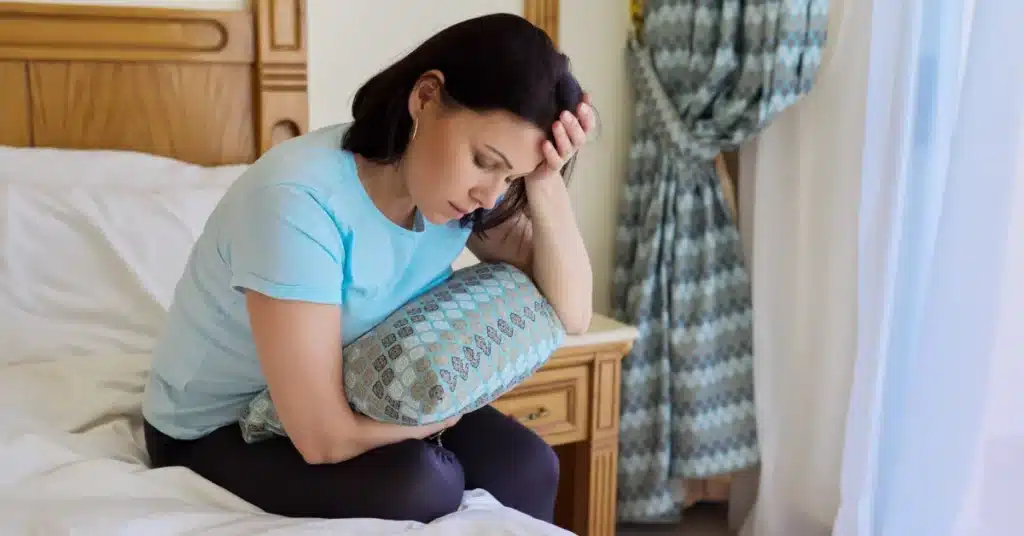Sexual dysfunction is as common in females as it is in males. We have much information available about male sexual dysfunctions but not as much for females.
This article will delve deeper into one such female sexual disorder, Female Sexual Arousal Disorder (FSAD).
We will discuss the symptoms, causes, and treatments of FSAD to give you a better understanding of your sexual health.
What is Female Sexual Arousal Disorder
Female Sexual Arousal Disorder is the inability of females to respond to sexual stimulation.
It is different from Hypoactive Sexual Desire Disorder (HSDD). It refers to the lack of desire to engage in sexual activity or low libido.
But experts have difficulty distinguishing between the two conditions. For this reason, doctors use the term Female Sexual Arousal/Interest Disorder as per the new edition of the Diagnostic and Statistical Manual of Mental Disorders (DSM-5).
Symptoms of Female Sexual Arousal Disorder
 Source: Valerii Honcharuk
Source: Valerii HoncharukFemale Sexual Arousal Disorder symptoms may come and go for many women. While others may experience them during sexual activity.
FSIAD symptoms may include:
- Lost or reduced interest in sexual activity
- Lost or reduced sexual thoughts or fantasies
- Lack of initiative to engage in sexual activity and typically unreceptive to a partner’s attempts to initiate
- Lost or reduced sexual excitement or pleasure in almost all sexual encounters
- lost or reduced sexual interest/arousal in response to any internal or external sexual cues
- lost or reduced genital or non-genital sensations during sexual activity in all or almost all sexual encounters.
These symptoms must cause significant distress or persist for at least six months to diagnose FSIAD.
Female Sexual Arousal Disorder Causes
FSAID can have psychological, physical, or hormonal causes.
Hormonal changes may lead to Female Sexual Arousal Disorder. Such hormonal changes may include pregnancy, Menopause, and birth control pills.
Psychological causes may include Depression, stress, Anxiety, and low self-esteem.
Physical causes of FSIAD may include health conditions, medications, or poor blood circulation to the genital region.
Health conditions such as Diabetes can also lead to sex problems.
Antidepressants are a common cause of male and female sexual dysfunction. They can lead to Painful Ejaculation or Delayed Ejaculation in males.
While in females, these medicines are significant cause of low libido or loss of sensation in the vagina.
Treatment for Female Sexual Arousal Disorder
Female Sexual Arousal Disorder treatment can depend upon the condition’s underlying cause.
A combination of counseling and medications works best for most women, depending on their cause.
Talk therapy or psychotherapy may help in cases where the cause of FSAD is psychological.
Flibanserin (Addyi) is an FDA-approved medication for treating low libido or FSIAD. You should consult a medical expert or gynecologist before taking any medicines.
Last Words
One of the most common female sexual dysfunction is Female Sexual Arousal Disorder.
It is the inability in females to respond to sexual stimulation or maintain sufficient lubrication.
FSAD differs from HSDD, but doctors have difficulty distinguishing the two conditions. For this reason, Female Sexual Interest/Arousal Disorder is a common term used for both conditions.
Common symptoms of FSIAD include a lack of desire/initiative to engage in sexual activity. The inability to respond to such sexual stimulation may also be a symptom of the condition.
The causes of the condition may be physical or psychological. It may also result from hormonal changes caused by pregnancy or Menopause.
Treating the underlying cause can help in treating FSIAD. Most women use a combination of therapy and medications for FSIAD.
Doctors typically suggest Flibanserin for treating the condition.
Frequently Asked Question
How do I know if I have Female Sexual Arousal Disorder?
It may be a sign of FSAD if you are having trouble getting sexually aroused, experiencing pain during sex, or feeling a lack of pleasure. Talking to a trusted adult or healthcare professional who can help determine if you have FSAD is essential.
Can Female Sexual Arousal Disorder be treated?
Yes, FSAD can be treated. Various approaches, including therapy, lifestyle changes, medications, and alternative therapies, can help improve sexual arousal and satisfaction.
Can Female Sexual Arousal Disorder affect relationships?
Yes, FSAD can affect relationships. Communication with your partner and seeking professional help can help address these challenges and find ways to improve sexual intimacy.
Can women of any age have Female Sexual Arousal Disorder?
Yes, FSAD can affect women of any age. It’s important to remember that seeking help is always an option, regardless of your age.
How long does Female Sexual Arousal Disorder last?
The duration of FSAD can vary from person to person. With appropriate treatment and support, many women experience improvements in their symptoms over time.
Cheap Medicine Shop only refers to credible, authoritative sources for our content. If you’re curious about how we ensure the integrity of our content, we encourage you to read our Content Information Policy.


